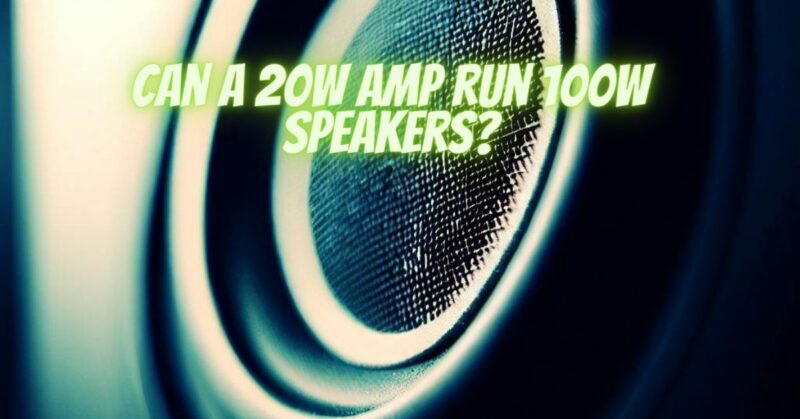When it comes to pairing speakers with amplifiers, it is crucial to consider power compatibility. However, what happens when you attempt to connect 100W speakers to a 20W amplifier? In this article, we will examine the potential outcomes and considerations associated with using higher wattage speakers with a lower wattage amplifier.
- Underpowering the Speakers: Connecting 100W speakers to a 20W amplifier means underpowering the speakers. Underpowering occurs when the amplifier’s power output is insufficient to fully drive the speakers to their maximum potential. While the speakers may still produce sound, they may not reach their intended performance level. Underpowered speakers can result in reduced volume, limited dynamic range, and potential distortion, particularly when pushing the system to higher volume levels.
- Risk of Speaker Damage: Underpowering speakers with a significantly lower wattage amplifier can potentially damage the speakers. When an amplifier lacks sufficient power to deliver the necessary electrical current to drive the speakers, it can cause the amplifier to clip or distort the signal. This distortion can introduce high-frequency energy that may exceed the speaker’s capabilities, leading to thermal damage to the voice coils or other components. Prolonged operation under these conditions can pose a risk to the speaker’s longevity.
- Speaker Efficiency and Sensitivity: The efficiency and sensitivity of speakers play a role in determining their performance with lower wattage amplifiers. Speakers with higher efficiency and sensitivity ratings can produce acceptable volume levels with lower power inputs. Conversely, speakers with lower efficiency or sensitivity ratings may require more power to reach satisfactory volume levels. Therefore, it is essential to consider the speaker’s specifications and sensitivity when connecting them to a lower wattage amplifier.
- Listening Environment and Volume Levels: The listening environment and desired volume levels also impact the feasibility of using higher wattage speakers with a lower wattage amplifier. In smaller spaces or for lower volume listening, a 20W amplifier may still provide adequate sound reproduction. However, in larger rooms or when higher volume levels are desired, the 20W amplifier may struggle to drive the 100W speakers effectively, resulting in reduced overall sound quality and potential distortion.
- Matching Power Levels: For optimal performance and to prevent potential damage, it is generally recommended to match the power handling capabilities of the speakers with the amplifier’s power output. This ensures that both components work in harmony, with the amplifier providing sufficient power to drive the speakers to their maximum potential. Investing in an amplifier that can deliver closer to the speaker’s power rating ensures a balanced and reliable system.
Conclusion:
Connecting 100W speakers to a 20W amplifier poses challenges, including underpowered sound reproduction, potential speaker damage, and limitations in volume and dynamic range. While the speakers may produce sound, they may not reach their intended performance levels, and prolonged use under such conditions can risk damaging the speakers. It is advisable to match the power handling capabilities of the speakers with an amplifier that can provide sufficient power output for optimal performance and longevity. Ensuring a proper power match between speakers and amplifiers is key to achieving the best audio experience while safeguarding the integrity of the equipment.


